There is almost nothing left of Europe’s famed forests, those that provided for human communities for millennia and gave life to the world’s most famous fairytales. This doesn’t mean that there aren’t forests in Europe, far from it: approximately 35 percent of the EU is currently covered in forest. But almost all of this is either plantations or secondary growth, having been logged sometime in the last few hundred years and in many areas logged in the last couple decades. This is why, according to author and guide, Lukasz Mazurek, the Bialowieza Forest is so special: “You really feel here like you travelled back in time some hundreds or thousands of years.”
Straddling the border between Poland and Belarus, the Bialowieza Forest is Europe’s last lowland old-growth forest, parts of which have never been cut by man. The entire forest covers about 140,000 hectares, or around 15 percent the size of Yellowstone National Park. Here, trees are king: growing over 40 meters (over 130 feet) tall, some were saplings when Christopher Columbus was born.
Moreover, most of Europe’s forests are now bereft of their megafauna: bears, wolves, red deer, moose have all seen their ranges squeezed considerably in the last few centuries. Other species have vanished altogether: it’s hard to imagine that Europe’s forests used to include lions, hyenas, elephants, rhinos, and giant cattle known as aurochs, which only went extinct in the 17th Century.
But, in Bialowieza, says Mazurek, “The food chains are almost unbroken.” The forest is home to wolves, lynx, boar, elk, red deer, roe deer, and its most iconic animal, the European bison (Bison bonasus). This species, the biggest land mammal in Europe, went extinct in the wild in the 1920s, but has since made a remarkable come-back.
“It was individuals originating from Bialowieza Forest that were selected from several zoological gardens across Europe and used to rebreed the species in the Bison Restitution Center in Bialowieza later,” says Mazurek. “Currently there are circa 3,000 European lowland bison living in the wild in several countries in Eastern Europe and Russia, about a half of them in Poland. All of them are descendants of these few animals from Bialowieza.”
An expert on Bialowieza, Mazurek guides wildlife tours to the forest (along with other places in Poland), has written the ultimate guide on the UNESCO World Heritage site, and runs the popular Wild Poland website.
Mazurek says the reason portions of Bialowieza remained uncut for centuries while the rest of Europe’s forests were decimated was ironically due to hunting for the rich and powerful.
“This forest has been a restricted royal hunting area since the early 15th Century. When Poland lost independence and Russians took over this area at the end of 18th Century, the tzars of Russia continued the hunting tradition here and again it was saved from logging.”
But, today, the park’s greatest threat is logging around the edges of the old-growth forest.
“380 square kilometers—-more than half the forest on the Poland side—are still logged by the State Forestry Company. They have some limits on cutting down old trees, trees with nest holes etc. but they still remove a lot of dead wood and many of these restrictions are not completely respected, as I have heard,” says Mazurek, adding, “We are in the 21st Century, part of the European Union, quite a modern and developed country by now and we keep cutting down this small remaining bit of the natural lowland broad-leafed forest, the last remaining area of this kind of habitat in Europe. Even Belarus, still a very communist country, is in a better state—they have more area of this forest on their side, 800 square kilometers versus our 600 square kilometers. And they protect it all! We don’t.”
Mazurek says that wildlife tourism can play a big role in moving conservation efforts further, especially by instilling in locals a pride for their home forest.
“Here, wildlife tourism is still undervalued, in my opinion,” Mazurek notes. Our role in conservation is quite simple and it works through reason and through money. The success of any conservation activity nowadays strongly depends on the engagement of local society. We raise awareness among the local society in a very direct and effective way...Those who observe us—the local people—start respecting the environment when they see others, foreigners, visiting and admiring their back yards. This is very visible with locals we interact with directly—owners and workers of hotels, restaurants, bus drivers, etc. It’s enough to say that some of these people have now bought a pair of binoculars and are happy to share their recent sightings each time they see us with a group of tourists.”
In a July interview with mongabay.com, Lukasz Mazurek talks about what makes Bialoweiza Forest one of continent’s most splendid natural areas, the state of wildlife tourism in the region, and one of his favorites animal encounters (hint: it involves wolves).
Interview With Lukasz Mazurek
Mongabay: What’s your background?
Lukas Mazurek: I guess it all started when I was a boy scout and spent a lot of time out in the forests of Eastern Poland. Later I got into birdwatching and so choosing environmental biology at university was kind of natural. I also volunteered a lot at bird protection societies doing seasonal bird counts and worked for WWF in the Biebrza National Park carrying out a research on the relations between farming and marshland birds. Guiding used to be my part-time and summertime job but over time it became my profession. I actually never planned it.
Bialowieza and Bison
Mongabay: What makes Bialowieza Forest special?
Lukas Mazurek: There are many things, but they all revolve around the fact how natural this forest is. With this comes all the other characteristics of this forest: such as high biodiversity, natural forest structure with 20-plus species of trees, its height of 40-plus meters, high number of trees between 100 and 600 years old, the amount of dead wood and so on. The food chains are almost unbroken. Finally, it is home for Europe’s largest land mammal, the once nearly extinct European lowland bison. You really feel here like you travelled back in time some hundreds or thousands of years.
Mongabay: How did this lowland forest escape cutting when every other similar forest in Europe was logged?
Lukas Mazurek: This may sound funny but it was actually because of hunting. This forest has been a restricted royal hunting area since the early 15th Century. When Poland lost independence and Russians took over this area at the end of 18th Century, the tzars of Russia continued the hunting tradition here and again it was saved from logging. To be completely accurate, though, the areas around the National Park were logged in World War I times and are still logged today and that is the largest threat to this forest today, at least in Poland.
Mongabay: Will you tell us about the European bison and the role of Bialowieza forest in saving this species from extinction?
Lukas Mazurek: The European bison is the largest European land mammal. It differs from the American bison in being slightly taller but slimmer and therefore lighter, with less hair and smaller head with longer horns. It actually became extinct in the wild in 1919 (Bialowieza—a lowland subspecies) and 1927 (Caucasus—a mountain subspecies). It was individuals originating from Bialowieza Forest that were selected from several zoological gardens across Europe and used to rebreed the species in the Bison Restitution Center in Bialowieza later. Currently there are circa 3,000 European lowland bison living in the wild in several countries in Eastern Europe and Russia, about a half of them in Poland. All of them are descendants of these few animals from Bialowieza.
Mongabay: What are some of the other species that people come to see in the Bialowieza?
Lukas Mazurek: Regarding mammals—wild boar, red deer, wolf, lynx and beaver, although wolves and lynx are not easily found of course! Many people visit here for birds in spring. The local specialties are species that you normally see much further north or east: pygmy and Tengmalm’s owl, three-toed and white-backed woodpecker, collared and red-breasted flycatchers and several more. This forest is probably best known for its population of woodpeckers. You can see eight European species of woodpeckers here plus the wryneck—closely related to them and sometimes regarded as the ninth species of woodpecker. This makes the complete picture—this natural forest has a lot of dead wood, a few times more than the average European forest. It is the insects living in the dead wood that these woodpeckers need, in general you could say.
Conservation
Mongabay: What conservation issues still face Bialowieza Forest?
Lukas Mazurek: Logging, logging and logging. Well, also hunting. Fires are not that much of a problem here as this forest is generally quite wet. This may be hard to believe but it is the sad truth: we are in the 21st Century, part of the European Union, quite a modern and developed country by now and we keep cutting down this small remaining bit of the natural lowland broad-leafed forest, the last remaining area of this kind of habitat in Europe. Even Belarus, still a very communist country, is in a better state—they have more area of this forest on their side, 800 square kilometers versus our 600 square kilometers. And they protect it all! We don’t.
Mongabay: What is the current state of logging in the forest versus protection?
Lukas Mazurek: In Poland 100 square kilometers are protected as a National Park and the further 120 square kilometers in the form of small nature reserves. Only half of the National Park—50 square kilometers are included in the UNESCO World Heritage Site and a Biosphere Reserve. The remaining 380 square kilometers—-more than half the forest on the Poland side—are still logged by the State Forestry Company. They have some limits on cutting down old trees, trees with nest holes etc. but they still remove a lot of dead wood and many of these restrictions are not completely respected, as I have heard.
The Lesser-Known Marshes of Poland
Mongabay: Biebrza marshes is lesser-known the Bialowieza, but is actually Poland’s largest national park. What’s the conservation significance of this ecosystem?
Lukas Mazurek: The Biebrza Marshes are a huge wetland area with a natural structure of peatland and a natural sequence of different plant communities from the river bank to the edge of the river valley. You could say semi-natural because it has been altered by traditional farming practices in the last centuries but perhaps this makes it even more precious because these farming practices like hand mowing and grazing cattle in the marshland have almost disappeared in Europe today. Scientists from Germany or Netherlands come here to learn about natural river valleys. Maybe it is worth mentioning that now as we have floods all over Europe and southern Poland, people in this part of Poland have never suffered from floods and yet, the rivers here flood every year.
Another importance of this area—it holds significant populations of many rare species in Europe—aquatic warbler, great snipe, greater spotted eagle, elk (moose), beaver, but also many plants and insects that are too many to list.
Wildlife Tourism in Europe
Mongabay: Europe is not usually thought of as a major wildlife destination. Why should this perception change?
Lukas Mazurek: We cannot compete in the terms of number of species with the equatorial areas. The weather here is also less reliable :) But you can see here quite a number of mammals and 150 to 200 bird species in a week in spring. Wildlife here is quite shy so watching them usually requires some local knowledge, experienced guides but is therefore very rewarding. Seeing some key species like bison, beaver, and moose are almost guaranteed if you have a good guide and these few occasions that we get to see wolves, lynx, brown bear stay in your mind forever.
Mongabay: What does ecotourism mean to you?
Lukas Mazurek: To me, it means that not only the group and the guide are taking part in the tour, visiting point A and point B but we interact with the environment and the local people, every one else we come in contact with as well as the environment benefits from this in some way, be it financial, educational or conservational.
Mongabay: What are travelers most surprised by when visiting Poland with you?
Lukas Mazurek: First is the fact that I can so easily show them many of the species they thought would be difficult to find. Second is that Eastern Poland is still very traditional in terms of countryside—wooden housing, small farms. Thirdly—it is the gorgeous food. There are many small venues that would serve you local, fresh food, often quite old, traditional meals and recipes, very special and always tasty, far from international fancy food found in the big hotels and expensive restaurants.
Mongabay: What role can wildlife tourism play in conservation?
Lukas Mazurek: I am very glad you asked this question because at least here, wildlife tourism is still undervalued, in my opinion. Our role in conservation is quite simple and it works through reason and through money. The success of any conservation activity nowadays strongly depends on the engagement of local society. We raise awareness among the local society in a very direct and effective way. On the one hand the participants of our tours can see and experience being close to wildlife, they can learn about them and have their questions answered. On the other hand those who observe us—the local people—start respecting the environment when they see others, foreigners, visiting and admiring their back yards. This is very visible with locals we interact with directly—owners and workers of hotels, restaurants, bus drivers, etc. It’s enough to say that some of these people have now bought a pair of binoculars and are happy to share their recent sightings each time they see us with a group of tourists.
Mongabay: Will you tell us about one of your favorite wildlife encounters in Bialowieza?
Lukas Mazurek: This would be wolves, of course. Last winter we were tracking a pack of wolves in one area with each tour, every two weeks. After four tours I had narrowed down their whereabouts to about one square kilometer where the footprints came from and disappeared into. With the last tour, I chose one vantage point and took our group there one early morning or actually night as it was still dark when we left. After about half an hour three wolves appeared about one kilometer away and walked towards us. We froze near the ground. At some point two of them disappeared in the forest and after a while they chased a huge stag of red deer across the track. Unsuccessful, they came back onto the track and continued towards us. They stopped about half way (500 meters) and lay down in the middle of the track. This meant they hadn’t seen or smelled us, they felt safe and were just having rest. After a few minutes they slowly stood up one by one and disappeared in the forest. I managed to record a short video of the last moments, you can see it here:
This article was originally written and published by Jeremy Hance, a contributing writer for news.mongabay.com. For the original article and more information, please click HERE.
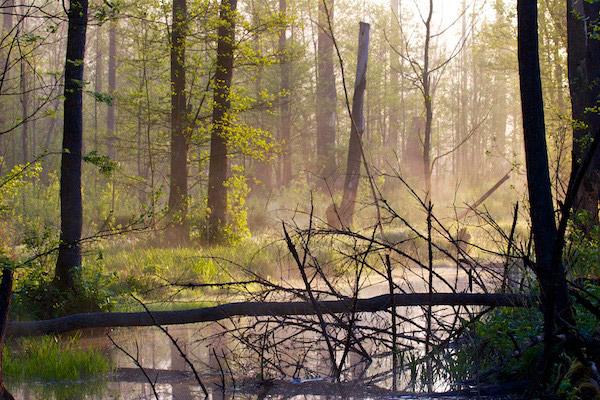
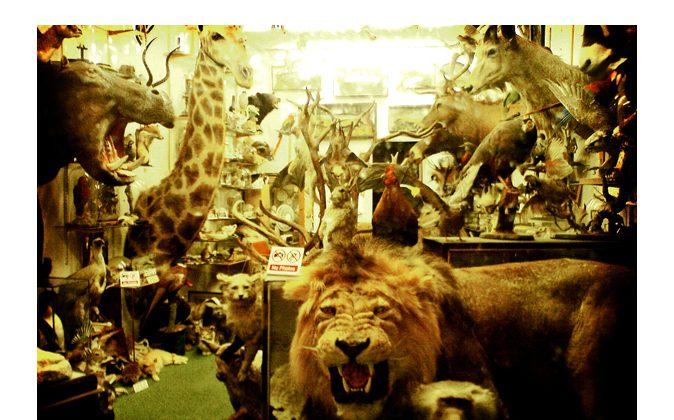
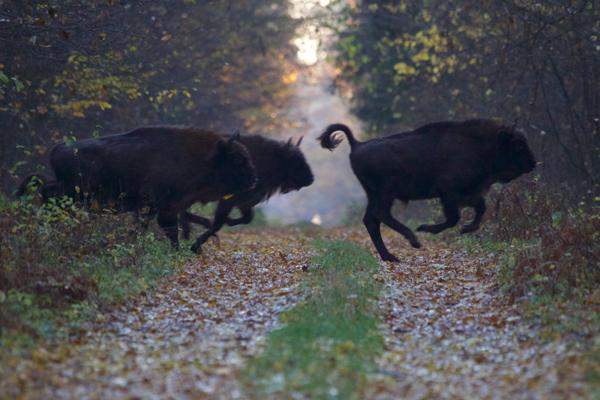
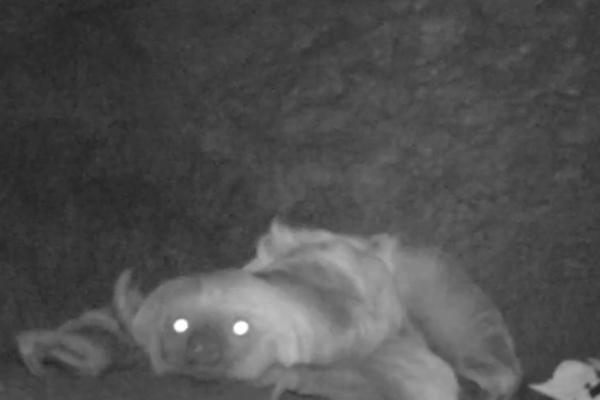
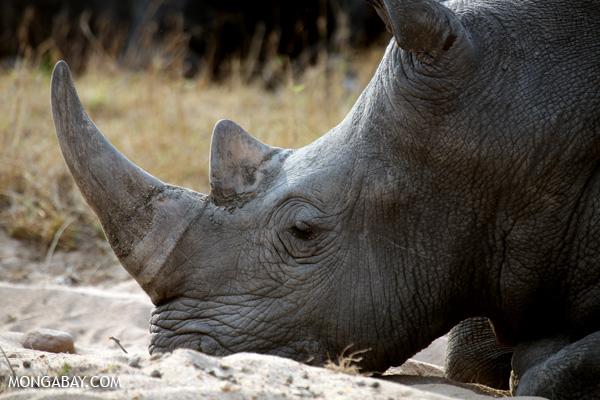
Friends Read Free